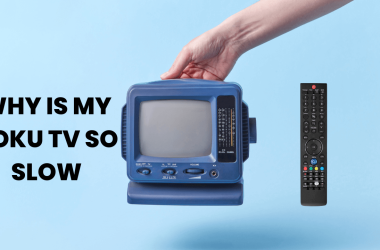How to Fix Philips TV Problems? Your Philips TV is an essential part of your home entertainment experience. Whether you’re binge-watching your favorite series or catching up on the latest news, it’s crucial that your television provides a seamless viewing experience. However, like any electronic device, Philips TVs can encounter issues. This comprehensive guide will explore common Philips TV problems, offering practical solutions to help you get back to enjoying your favorite shows without interruption. From troubleshooting display issues to resolving connectivity hiccups, we’ve got you covered with expert advice and easy-to-follow steps.
Methods to Fix Philips TV Problems
Blurry or Distorted Image
One common issue many Philips TV owners face is a blurry or distorted image. This can make it challenging to enjoy your favorite content. Fortunately, there are a few steps you can take to address this problem. First, check the display settings on your TV. Ensure that the resolution is set to the highest possible option. Additionally, inspect all cables connecting your TV to other devices, such as a DVD player or gaming console. Loose or damaged cables can significantly affect picture quality.
If adjusting the settings and checking the cables doesn’t resolve the issue, consider updating the TV’s firmware. Manufacturers often release firmware updates to improve performance and fix known bugs. Visit the Philips support website and search for your TV model to find the latest available firmware. Follow the instructions provided to update your TV, which might help rectify the blurry or distorted image problem.
Finally, if none of the above solutions work, it may be worth consulting a professional technician. There might be an internal hardware issue causing the display problem, and a qualified technician can diagnose and fix it for you.
Read: Samsung TV Problems
Screen Flickering
Screen flickering is another frustrating issue that Philips TV owners might encounter. It can make watching television extremely unpleasant. To tackle this problem, start by checking the power supply to your TV. Ensure that the power cable is securely connected to both the TV and the power outlet. An unstable power supply or loose connections can lead to screen flickering.
Next, examine your TV’s display settings. Sometimes, incorrect settings can cause flickering. Navigate to the settings menu and reset the display settings to their default values. This simple step can often resolve the issue and restore a stable picture.
If screen flickering persists, try connecting the TV to a different power outlet in your home. Faulty electrical wiring can cause fluctuations in power supply, leading to flickering. By using a different outlet, you can determine if the issue is power-related. If the problem continues, consider contacting Philips customer support for further assistance.
Dead Pixels
Dead pixels are a common concern for any LCD or LED TV, including Philips models. These are tiny spots on the screen that remain unresponsive, displaying only a single color. While one or two dead pixels may not be noticeable, a cluster of them can be distracting.
To address this issue, start by gently massaging the affected area with a soft cloth. Sometimes, gentle pressure can revive a dead pixel. If this method doesn’t work, there are software tools available online that can help fix dead pixels. These tools work by rapidly cycling colors on the screen, which may coax the pixel back to life.
However, if the dead pixel problem persists, especially if there are many of them, it might be necessary to contact Philips support or a professional technician for further guidance. In some cases, a replacement or repair may be required.
Resolving Connectivity Problems
Wi-Fi Connection Issues
Many Philips Smart TVs connect to the internet via Wi-Fi, offering access to streaming services and online content. However, connectivity problems can sometimes disrupt this experience. If your TV is having trouble connecting to Wi-Fi, there are a few troubleshooting steps you can try.
- First, ensure that your Wi-Fi network is functioning correctly by checking if other devices can connect to it. If other devices are experiencing connectivity issues, restart your router. A simple reboot can often solve common connectivity problems and restore network functionality.
- If your Wi-Fi is working fine but your TV still won’t connect, try resetting the network settings on your TV. Go to the settings menu, select “Network,” and choose the option to forget the current Wi-Fi network. Then, reconnect to your network by entering the password again. This process can often resolve connectivity issues caused by network configuration errors.
Finally, if your Philips TV is positioned far from your Wi-Fi router, consider using a Wi-Fi extender or moving the router closer to the TV. Poor signal strength due to distance can contribute to connectivity problems, and improving the signal can help.
HDMI Connection Problems
HDMI ports are a crucial feature of modern TVs, allowing you to connect various devices such as gaming consoles, Blu-ray players, and streaming devices. However, sometimes these connections can be problematic, leading to audio or visual issues.
Begin troubleshooting HDMI connection problems by ensuring that the HDMI cable is securely connected to both your TV and the device you’re using. Loose connections can lead to issues such as no picture or sound. If the problem persists, try using a different HDMI cable, as damaged cables can cause connectivity problems.
It’s also important to check if the correct input source is selected on your TV. Use your TV remote to cycle through the input options until you find the one corresponding to your device. If the issue still isn’t resolved, consider updating the firmware on both your Philips TV and the connected device, as compatibility improvements may be included in recent updates.
Bluetooth Pairing Difficulties
Bluetooth connectivity is a convenient way to pair your Philips TV with wireless speakers, headphones, or other accessories. However, pairing difficulties can arise, preventing you from enjoying a seamless audio experience.
- If you’re having trouble pairing a Bluetooth device with your Philips TV, start by ensuring that the device is in pairing mode. Consult the device’s manual for specific instructions on entering pairing mode. Next, access the TV’s Bluetooth settings and make sure that Bluetooth is enabled.
- If the device isn’t detected, try turning off and then restarting both the TV and the Bluetooth device. Often, a quick reboot can solve minor connectivity issues. Additionally, ensure that the Bluetooth device is within the recommended range for pairing, as distance can impact connectivity.
If you continue to experience difficulties, check for firmware updates for both your Philips TV and the Bluetooth device. Manufacturers regularly release updates to improve compatibility and address known issues.
Audio Problems and Solutions
No Sound
Experiencing no sound from your Philips TV can be frustrating, especially when you are looking forward to catching up on your favorite shows. Fortunately, there are a few troubleshooting steps you can take to resolve this issue.
- Start by checking the volume settings on your TV. It’s possible that the volume is muted or set too low. Use the TV remote to increase the volume and unmute the sound if necessary. Additionally, inspect any external audio devices connected to your TV, such as soundbars or home theater systems, to ensure they are powered on and connected correctly.
- If adjusting the volume settings doesn’t work, try switching to a different audio output mode. Your TV may have multiple audio output options, such as internal speakers and external speakers. Ensure that the correct output mode is selected in the audio settings menu.
Finally, if none of these steps resolve the issue, consider performing a factory reset on your Philips TV. This will restore the TV to its original settings, which can help fix more complex audio problems. Just be sure to back up any important data before proceeding with a factory reset.
Audio Sync Problems
Audio sync issues occur when the sound doesn’t match the visuals on the screen. This can be particularly noticeable when watching movies or shows, making it challenging to enjoy the content.
- To address audio sync problems, start by checking the settings on your Philips TV. Many TVs have an audio delay feature that allows you to adjust the timing of the audio to match the visuals. Access the audio settings menu and use the audio delay adjustment option to correct the sync issue.
- If adjusting the audio delay doesn’t work, check the settings on any connected external audio devices. Some devices have their own audio delay settings that can be adjusted to synchronize the sound with the visuals. Refer to the device’s manual for instructions on accessing and modifying these settings.
If audio sync issues persist, try connecting your audio device directly to the TV using an HDMI ARC (Audio Return Channel) connection. This can help eliminate potential lag caused by additional audio processing in external devices.
Distorted Sound
Distorted sound can greatly diminish the enjoyment of your favorite TV shows and movies. If you’re experiencing this issue, there are a few steps you can take to troubleshoot and resolve it.
- Begin by checking the audio settings on your Philips TV. Ensure that no sound effects or equalizer settings are enabled, as these can sometimes introduce distortion. Reset the audio settings to their default values to eliminate any custom configurations that might be causing the problem.
- Next, inspect any external audio devices connected to your TV. Loose or damaged audio cables can lead to distorted sound. Ensure that all connections are secure and replace any faulty cables if necessary.
Finally, if the distorted sound persists, try a different audio source. Play audio from a different streaming service, TV channel, or external device to determine if the issue is specific to a particular source. If the problem is isolated to one source, it may be a signal issue rather than a problem with your TV.
Remote Control Problems
Unresponsive Remote
An unresponsive remote control can be frustrating, especially when you’re trying to change channels or adjust the volume. Fortunately, there are a few troubleshooting steps you can follow to resolve this issue.
- First, check the batteries in the remote control. Weak or depleted batteries can cause the remote to stop functioning. Replace the batteries with fresh ones and ensure they are inserted correctly. Test the remote to see if it becomes responsive again.
- If replacing the batteries doesn’t work, try resetting the remote control. Remove the batteries and hold down any button on the remote for about 10 seconds. This will discharge any residual power in the remote. Reinsert the batteries and test the remote again.
If the remote remains unresponsive, inspect the infrared sensor on your Philips TV. Ensure that nothing is obstructing the sensor and that it is clean. Dust or dirt on the sensor can interfere with the remote’s signal.
Remote Pairing Issues
Remote pairing issues can occur when your remote control is unable to communicate with your Philips TV. If you’re experiencing this problem, there are a few steps you can take to restore the connection.
- Start by checking the line of sight between your remote control and the TV. The remote uses infrared signals, so ensure that there are no obstacles between the remote and the TV.
- Next, try re-pairing the remote with the TV. Refer to your TV’s manual for instructions on how to put the remote into pairing mode and establish a connection with the TV. Follow the steps carefully to complete the pairing process.
If re-pairing the remote doesn’t work, consider performing a factory reset on your Philips TV. This will reset all settings, including remote pairing, to their default values. Keep in mind that a factory reset will erase any customized settings or preferences on your TV, so make sure to back up any important data before proceeding.
Overheating and Power Issues
TV Overheating
Overheating can lead to various issues with your Philips TV, including reduced performance and potential damage to internal components. If you suspect your TV is overheating, there are a few steps you can take to address the problem.
- Start by ensuring that your TV has proper ventilation. Check that there are no objects blocking the airflow around the TV. Avoid placing the TV near heat sources such as radiators or direct sunlight, as these can contribute to overheating.
- Next, clean the TV’s vents and fans. Dust and debris can accumulate over time and impede airflow, causing the TV to overheat. Use a soft brush or compressed air to gently clean the vents and remove any obstructions.
If overheating continues to be an issue, consider adjusting the TV’s brightness settings. High brightness levels can generate excess heat. Lowering the brightness can help reduce the heat output and prevent overheating.
TV Won’t Turn On
If your Philips TV refuses to turn on, it can be a frustrating experience. Fortunately, there are a few troubleshooting steps you can try to identify and resolve the issue.
- Start by checking the power supply. Ensure that the power cable is securely connected to both the TV and the power outlet. If the TV is connected to a power strip or surge protector, check if the power strip is turned on and functioning correctly. Try plugging the TV directly into the wall to rule out issues with the power strip.
- Next, perform a soft reset by unplugging the TV from the power outlet and waiting for a few minutes. Then, plug the TV back in and attempt to power it on. This can help reset any internal components and resolve temporary power issues.
If the TV still won’t turn on, check if there is a standby light on the TV. If the standby light is on but the TV won’t power up, it may indicate an internal hardware problem. In this case, it’s best to contact Philips support or a professional technician for further assistance.
Power Cycling
Power cycling, where the TV repeatedly turns on and off, can be a frustrating issue. This behavior can disrupt your viewing experience and may indicate a problem with the TV’s power management.
- To address power cycling, start by checking for any firmware updates for your Philips TV. Manufacturers often release updates to fix known issues and improve performance. Visit the Philips support website and search for your TV model to download and install the latest firmware.
- Next, inspect any external devices connected to your TV. Faulty devices or cables can cause power cycling. Disconnect all external devices except for the power cable, and test if the power cycling continues. If the issue is resolved, reconnect the devices one by one to identify the problematic device or cable.
If power cycling persists, consider performing a factory reset on your Philips TV. This will restore the TV to its original settings, which can help resolve software-related power cycling issues. Be sure to back up any important data before proceeding with a factory reset.
FAQ’s
Q: Why is my Philips TV screen black?
A: A black screen on your Philips TV can be caused by a variety of factors. Start by checking the TV’s power supply and ensuring that the power cable is securely connected. If the power supply is functioning correctly, check if the TV is set to the correct input source. Use the TV remote to cycle through the input options until you find the one corresponding to your connected device.
If the screen remains black, try performing a soft reset by unplugging the TV from the power outlet and waiting for a few minutes before plugging it back in. If none of these steps resolve the issue, there may be an internal hardware problem, and it’s best to contact Philips support for assistance.
Q: How do I reset my Philips TV remote?
A: To reset your Philips TV remote, start by removing the batteries from the remote control. Hold down any button on the remote for about 10 seconds to discharge any residual power. Reinsert the batteries and test the remote to see if it becomes responsive again. If the remote still isn’t functioning, try replacing the batteries with fresh ones, as weak or depleted batteries can cause the remote to stop working.
Q: How can I fix a flickering screen on my Philips TV?
A: A flickering screen on your Philips TV can be caused by an unstable power supply or incorrect display settings. Start by checking the power supply and ensuring that the power cable is securely connected. If the power supply is fine, inspect the display settings on your TV and reset them to their default values.
If the screen continues to flicker, try connecting the TV to a different power outlet to rule out any electrical issues. If none of these steps resolve the problem, it’s best to contact Philips support for further assistance.
Q: What do I do if my Philips TV won’t connect to Wi-Fi?
A: If your Philips TV won’t connect to Wi-Fi, start by ensuring that your Wi-Fi network is functioning correctly by checking if other devices can connect to it. If other devices are experiencing connectivity issues, restart your router to resolve common network problems.
If the Wi-Fi is working fine but the TV still won’t connect, try resetting the network settings on your TV. Go to the settings menu, select “Network,” and choose the option to forget the current Wi-Fi network. Then, reconnect to your network by entering the password again. If the TV is positioned far from your Wi-Fi router, consider using a Wi-Fi extender or moving the router closer to the TV to improve signal strength.
Q: How do I fix distorted sound on my Philips TV?
A: To fix distorted sound on your Philips TV, start by checking the audio settings and ensuring that no sound effects or equalizer settings are enabled. Reset the audio settings to their default values to eliminate any custom configurations that might be causing the distortion.
Inspect any external audio devices connected to your TV and ensure that all connections are secure. Loose or damaged audio cables can lead to distorted sound. If the distorted sound persists, try playing audio from a different source to determine if the issue is signal-related. If the problem is isolated to one source, it may be a signal issue rather than a problem with your TV.
Conclusion
Philips TVs offer a great way to enjoy your favorite shows and movies, but like any electronic device, they can encounter issues. By understanding common problems and their solutions, you can quickly troubleshoot and resolve issues to get back to enjoying your entertainment. From display and connectivity problems to audio and remote control issues, this comprehensive guide has provided you with practical steps to address these challenges.



![How to Reset Emerson TV [Step-By-Step 2025 Guide] 7 How-to-Reset-Emerson-TV-[Step-By-Step-2024-Guide]](https://smarttvmaster.com/wp-content/uploads/2024/05/How-to-Reset-Emerson-TV-Step-By-Step-2024-Guide-380x250.png)
![How to Turn on Samsung TV Without Remote [5 Simple Ways] 12 How-to-Turn-on-Samsung-TV-Without-Remote-[5-Simple-Ways]](https://smarttvmaster.com/wp-content/uploads/2024/07/How-to-Turn-on-Samsung-TV-Without-Remote-5-Simple-Ways.png)

![Top 10 Hisense TV Problems [Causes & Effective Solution] 18 Top-10-Hisense-TV-Problems-[Causes-&-Effective-Solution]](https://smarttvmaster.com/wp-content/uploads/2024/03/Top-10-Hisense-TV-Problems-Causes-Effective-Solution-380x250.png)